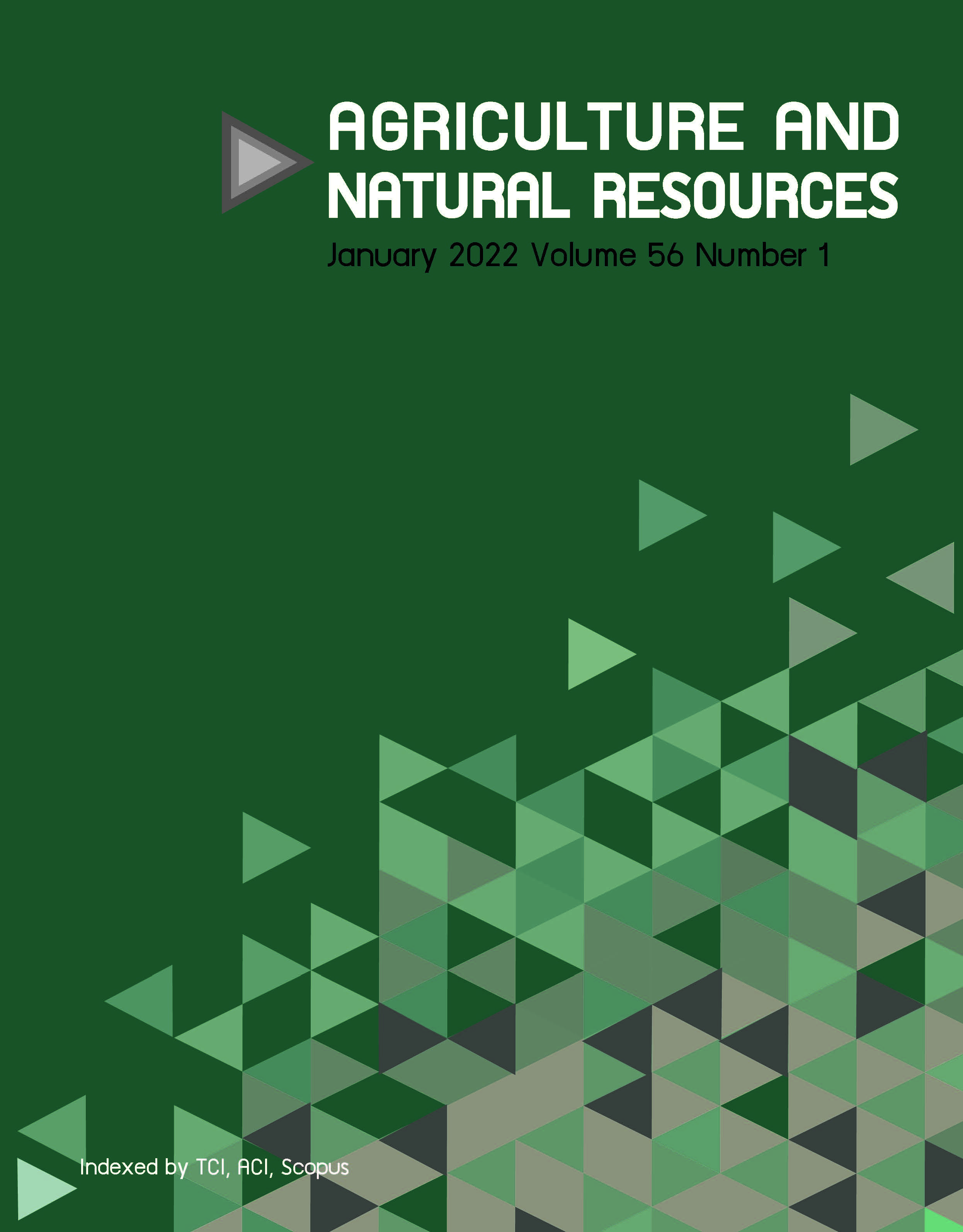Rice (Oryza sativa L.) breeding for a combination of shallow and deep root traits derived from lowland × upland for alternate wetting and drying systems
Keywords:
Pedigree breeding, Root anatomy, Root angle, Water-savingAbstract
Drought stress is one of the major abiotic stresses caused by climate change that limits rice yield production worldwide. To overcome this situation, alternative wetting and drying (AWD) systems may be a solution to reduce the water supply required for rice production in irrigation areas. In addition, the architecture, morphology and anatomy of a root under mild-drought conditions are considered key traits driving the adaptive response of rice to water deficit. Thus, the combination of shallow and deep roots derived from lowland rice (Homchonlasit) crossed with upland rice (Pa-yah Leum Gaeng) was performed based on pedigree selection. The results showed that the mean (115 ± 4) number of deep roots (DR) was successful in combining with shallow roots (SR) (97 ± 5) in four selected lines that contained a ratio of deep roots (RDR) of 1.19 ± 0.06, while the lowland parent had 24 ± 2 DR and 41 ± 3 SR that accounted for an RDR of 0.58±0.02 for AWD conditions. Notably, the xylem area, cortex area and epidermis thickness of DR in breeding lines were similar to those of the upland rice parents and they were larger than those of the lowland rice parents. Finally, the mean (± SE) values for grain yield (4.44 ± 0.37 t/ha) and water use efficiency (WUE, 0.55 ± 0.05) of the breeding lines were higher than those of their parents (3.23 ± 0.24 t/ha, 0.40 ± 0.03 WUE, respectively) under AWD conditions by 28% and 37%, respectively. Thus, the breeding program was successful in combining shallow and deep root traits suitable for the AWD system and the breeding lines could be used as donor parents in future breeding programs.
Downloads
Published
How to Cite
Issue
Section
License
Copyright (c) 2022 Kasetsart Universityonline 2452-316X print 2468-1458/Copyright © 2022. This is an open access article under the CC BY-NC-ND license (http://creativecommons.org/licenses/by-nc-nd/4.0/),
production and hosting by Kasetsart University of Research and Development Institute on behalf of Kasetsart University.







